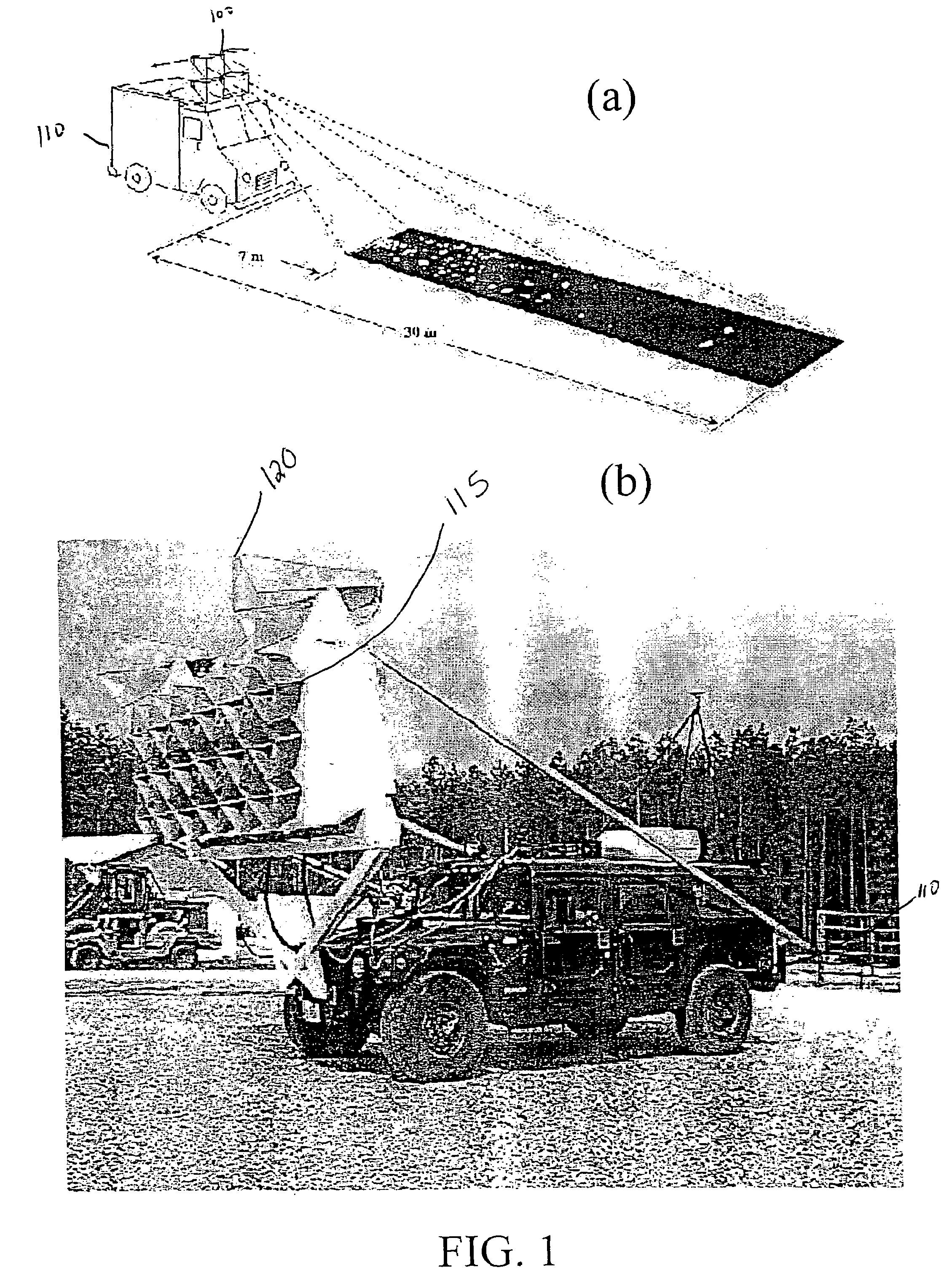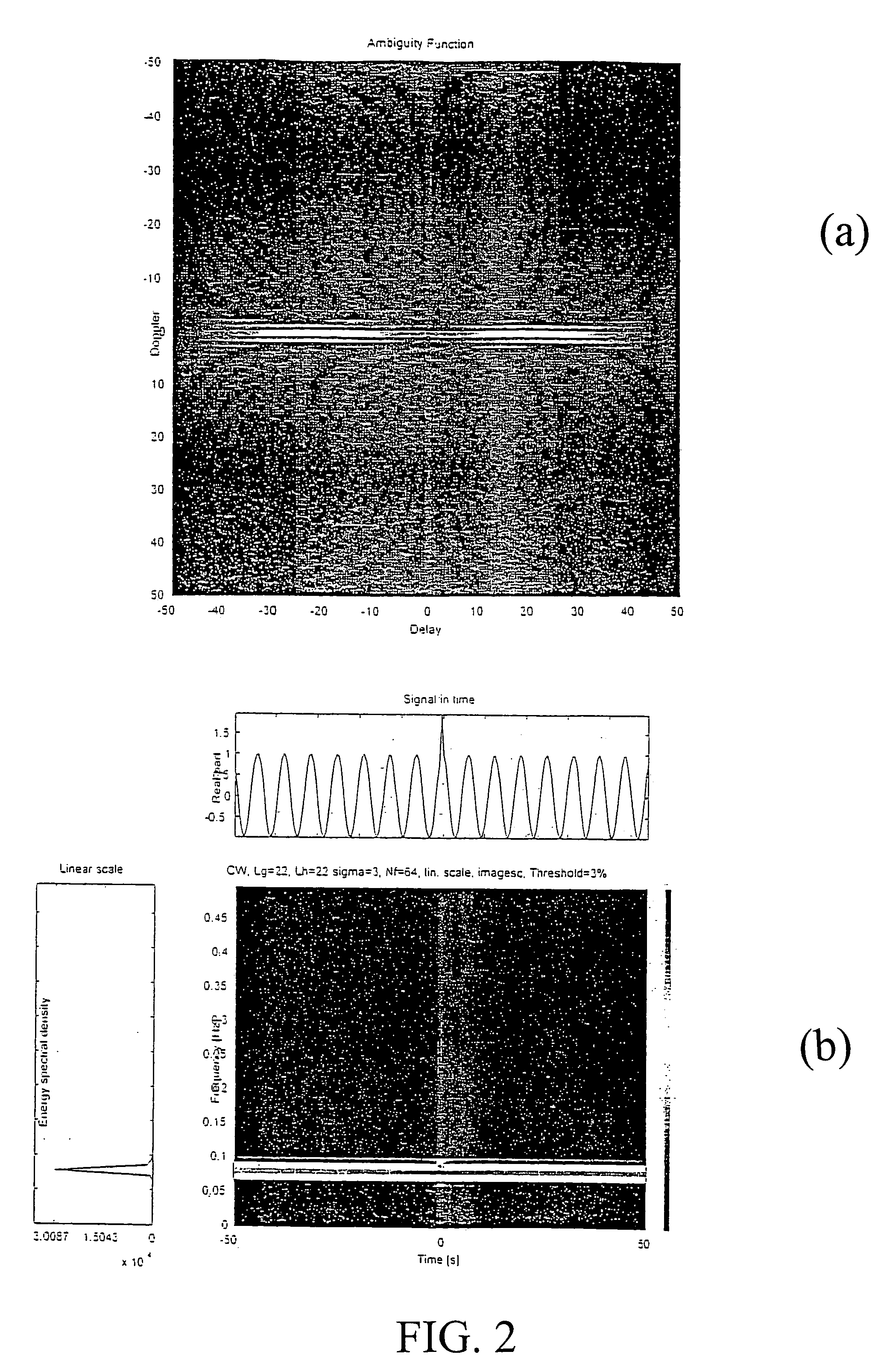Land mine detector
a mine detector and detector technology, applied in the field of advanced signal processing techniques, can solve the problems of armed conflict remnants, mines that have caused substantial humanitarian and economic harm in regions throughout the globe, and are known to be extraordinarily difficult to achiev
- Summary
- Abstract
- Description
- Claims
- Application Information
AI Technical Summary
Benefits of technology
Problems solved by technology
Method used
Image
Examples
examples
[0076]The present invention is further illustrated by the following specific Examples, which should not be construed as limiting the scope or content of the invention in any way.
[0077]Mine patterns taken from surface mines using the invention are first presented in time-frequency form. It is reported that surface mines have a salient double-peak signature in the spatial domain, which can be interpreted as the signals returned from the front and rear edges of a mine. It becomes even more evident in the time-frequency domain. FIGS. 7(a)–7(d) show several time-frequency representations for a surface placed metal mine (TM62M), a plastic mine (TM62P3), a plastic mine (VS2.2) and a stake (fiducial), respectively. The front and rear edges can be modeled as scattering centers, with each edge serving as a discrete event in time. In the time-frequency domain, it shows up as a vertical line in the image since it occurs at a particular time instance but over all frequencies. The edges can be us...
PUM
 Login to View More
Login to View More Abstract
Description
Claims
Application Information
 Login to View More
Login to View More - R&D
- Intellectual Property
- Life Sciences
- Materials
- Tech Scout
- Unparalleled Data Quality
- Higher Quality Content
- 60% Fewer Hallucinations
Browse by: Latest US Patents, China's latest patents, Technical Efficacy Thesaurus, Application Domain, Technology Topic, Popular Technical Reports.
© 2025 PatSnap. All rights reserved.Legal|Privacy policy|Modern Slavery Act Transparency Statement|Sitemap|About US| Contact US: help@patsnap.com



